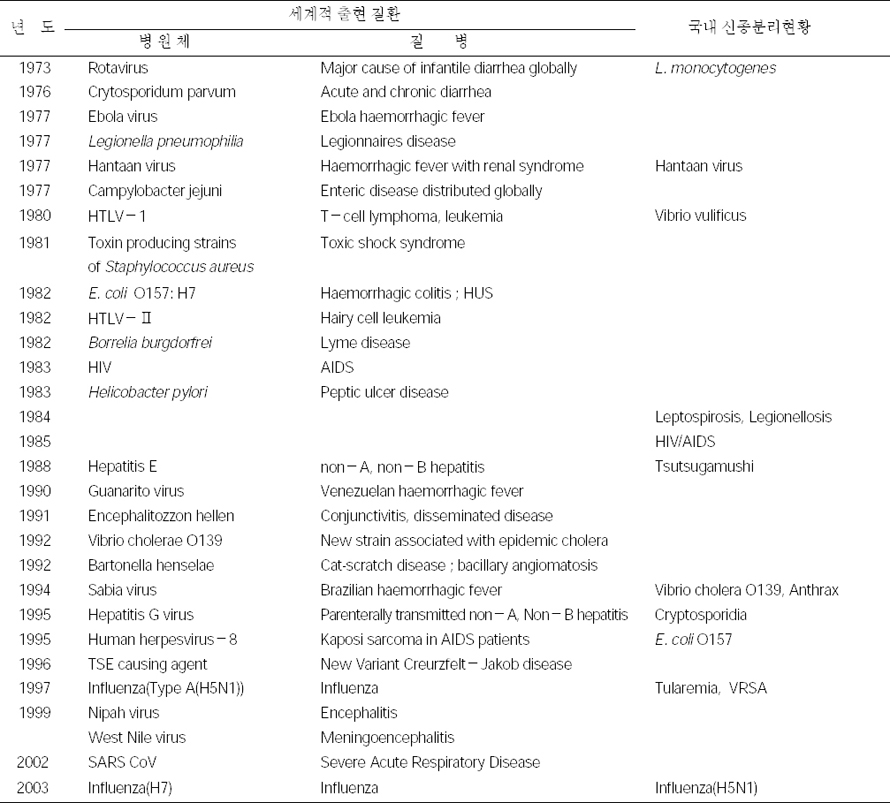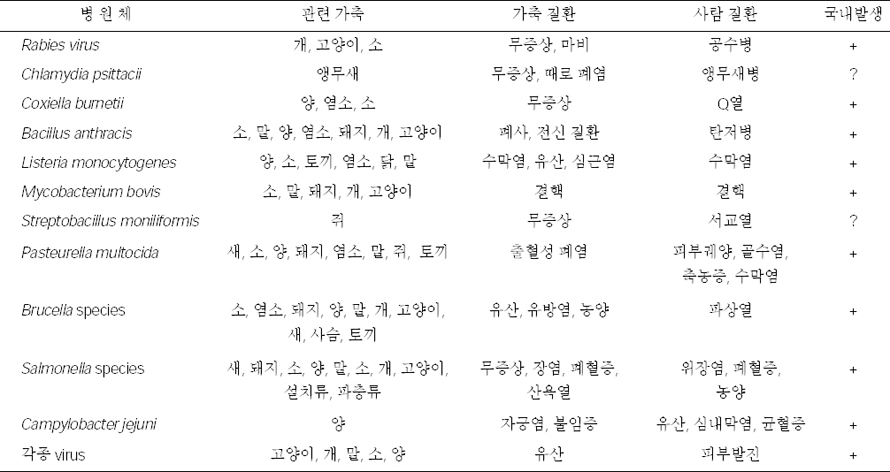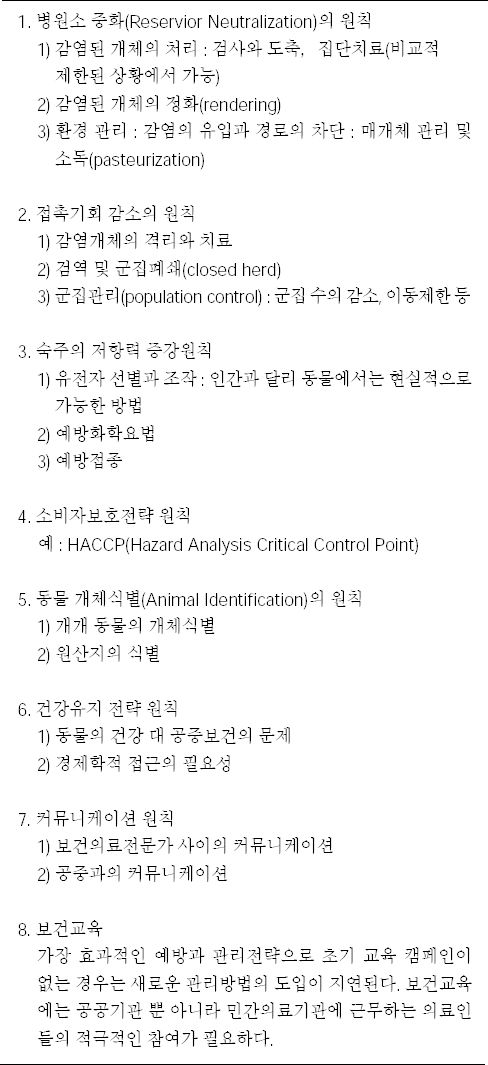 |
 |
- Search
| J Korean Med Assoc > Volume 47(11); 2004 > Article |
Abstract
Zoonoses are diseases caused by the agents that are transmitted between vertebrate animals and human. It is the interaction between agents, host, and the environment they share that determines whether or not infection will be successful. Zoonotic diseases usually have a wide range of host and are particularly important sources of emerging new infectious diseases in human. From an evolutionary point of view, infections in humans and in other animals share common origins. Zoonotic agents are extremely variable in their host specificity and their impact on individuals and host population. The control of zoonoses depends on attempts to reduce vector populations of to limit contacts with reservoir species. In most instances, however, the control efforts require an environmental or human behavioral modification in addition to direct efforts to reduce the size of the vector population. In this article, I described the common natural history and ecologic characteristics of zoonoses, and explained why we should keep an eye on the change in zoonoses with emerging infections. And I also introduced the recent change in the incidence of notifiable zoonotic diseases among animals and humans in Korea, and the principle of control and prevention of zoonoses.
References
2. Hugh-Jones ME, Hubbert WT, Hagstad HV. Zoonoses-recognition, control and prevention 2000;Iowa: Iowa State University Press.
3. Webber R. Communicable disease epidemiology & control 1998;Wallingford: cab international.
4. Child JE, Strickland GT. In: Strickland GT, editor. Zoonoses. Hunter's tropical medicine and emerging infectious disease 2000;8th ed. Philadelphia: WB Saunders.
5. Schwabe CS. Verterinay medicine and human health 1984;3rd ed. Baltimore: Williams & Wilkins.
9. Diamond J. Guns, germs, and steel 1997;New York: WW Norton.
10. McNeil W. Plagues and people 1976;New York: Anchor press.
11. Morse S. Emerging viruses 1993;New York: Oxford University Press.
14. Lederberg J. Infectious disease as an evolutionary paradigm. Emerg Infect Dis 1997;3:417-423.
15. In: Lederberg J, Shope RE, Oaks SC, editor. Emerging infectionsmicrobial threats to health in the United States 1992;Washington DC: National Academy Press.
17. Acha PN, Szyfres B. Sci Publ No. 503. Zoonoses and communicable disease common to man and animals 1987;2nd ed. Washington DC: PAHO.
21. APHA. Control communicable disease manual 2000;17th ed. United book press.
22. Nelson KE, Williams CM, Graham NMH. Infectious Disease Epidemiology 2001;Gaithersburg: An Aspen Publication.
- TOOLS
-
METRICS

-
- 0 Crossref
- Scopus
- 968 View
- 2 Download
-
Related articles in
J Korean Med Assoc -
Epidemiology of HIV infection and AIDS2024 March;67(3)
Epidemiology and pathogenesis of scabies2023 December;66(12)
Epidemiology and diagnosis of inflammatory bowel diseases2021 September;64(9)
Etiology and epidemiology of neuropathic pain2021 July;64(7)
Epidemiology of Helicobacter pylori Infection in Korea1997 September;40(9)












